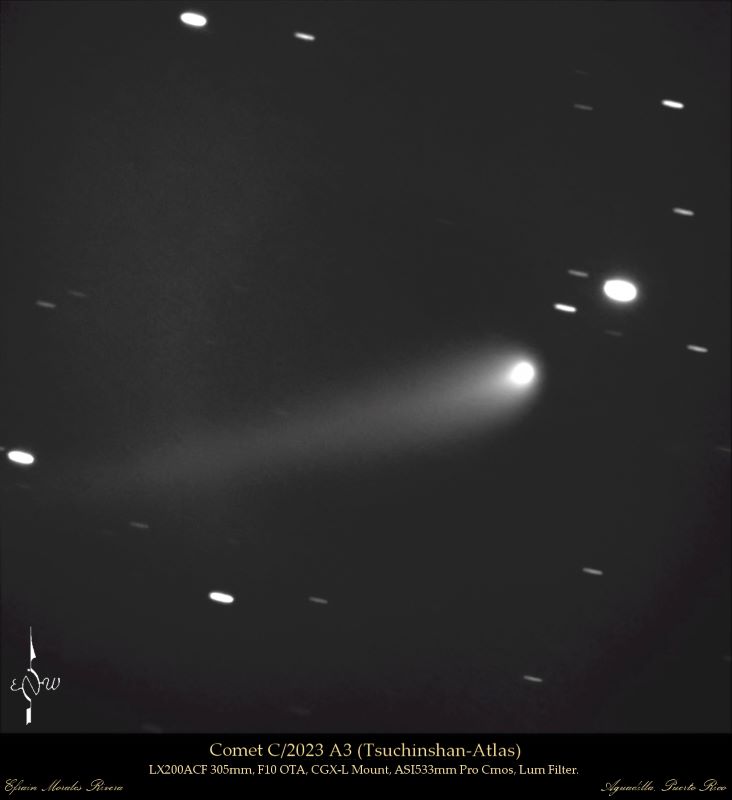
Comet Tsuchinshan-Atlas may be disintegrating
Observers around the world have been waiting for the next great comet to become visible to the unaided eye. And many thought Comet Tsuchinshan-ATLAS might be it! Discovered in early 2023, the comet had the possibility of brightening substantially around the time of its closest approach to Earth and the sun in October, 2024. But in recent months, as Comet C/2023 A3 Tsuchinshan-ATLAS has been approaching the inner solar system, it should have been brightening. And observers were perplexed becaue they did not notice a brightness increase during the past three months. And now a new study suggests the cometary nucleus is fragmenting.
The paper’s author, Zdenek Sekanina, a Czech-American astronomer and comet expert at NASA’s Jet Propulsion Laboratory, said on July 8, 2024, the comet has entered an advanced phase of fragmentation. He said the end of Comet Tsuchinshan-ATLAS is inevitable.
However, comets are notorious for being erratic and unpredictable. So we will have to wait a few nights or weeks and see what happens to the comet next. If you have a small telescope, you can take a look for yourself. Check out the charts below.
Finder charts for Comet Tsuchinshan-ATLAS
If the comet is indeed breaking up and you still want to see it, you’ll have to dust off your telescope. According to The Sky Live, the current magnitude of the comet is 9.6, well beyond the range of the unaided eye. Here are some finder charts to help you track it down.
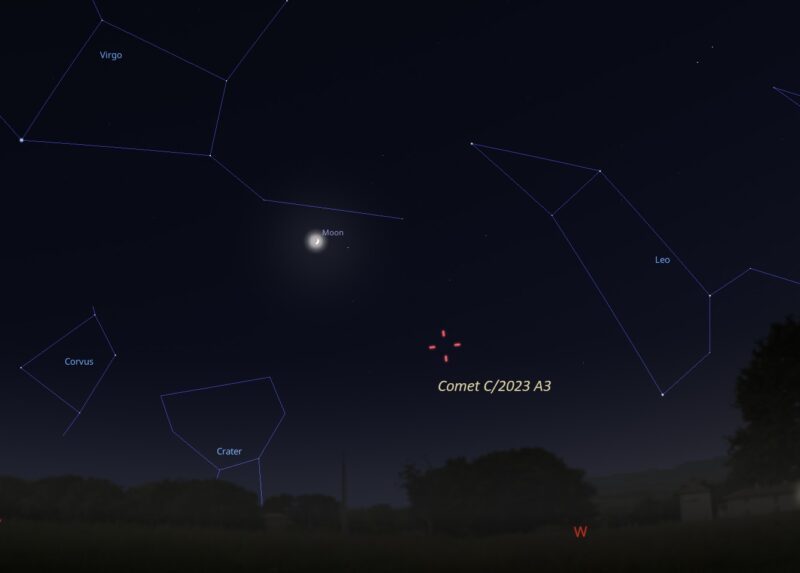
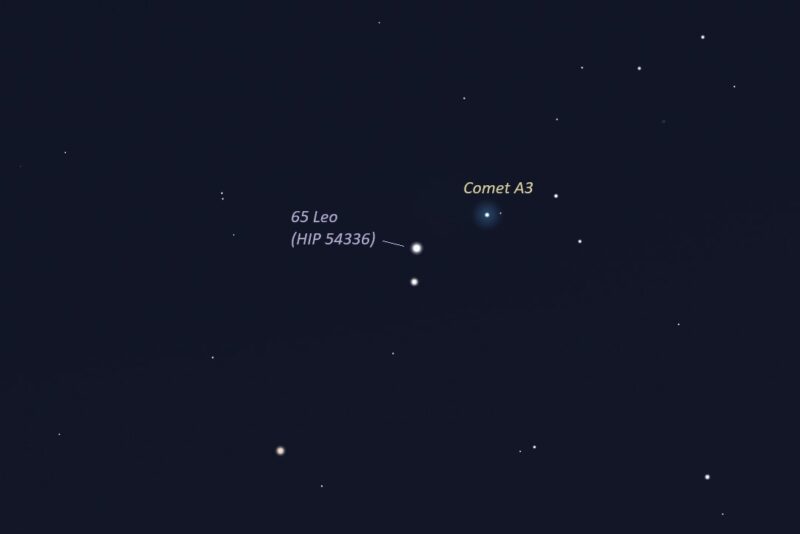
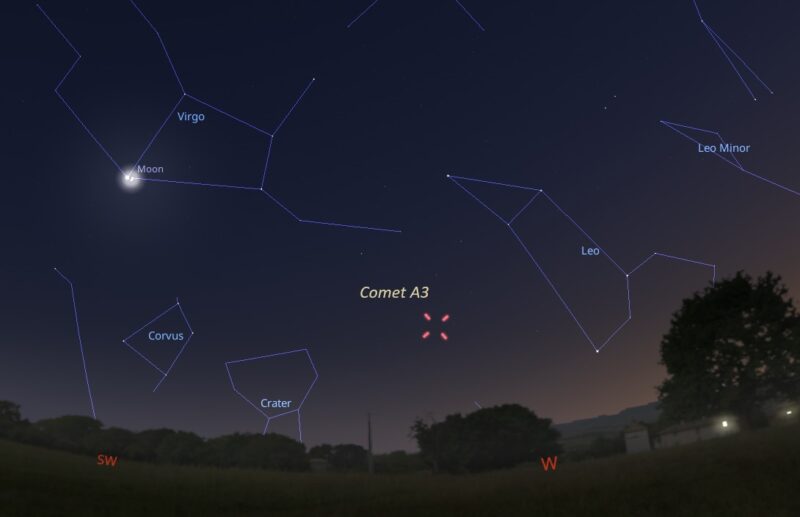
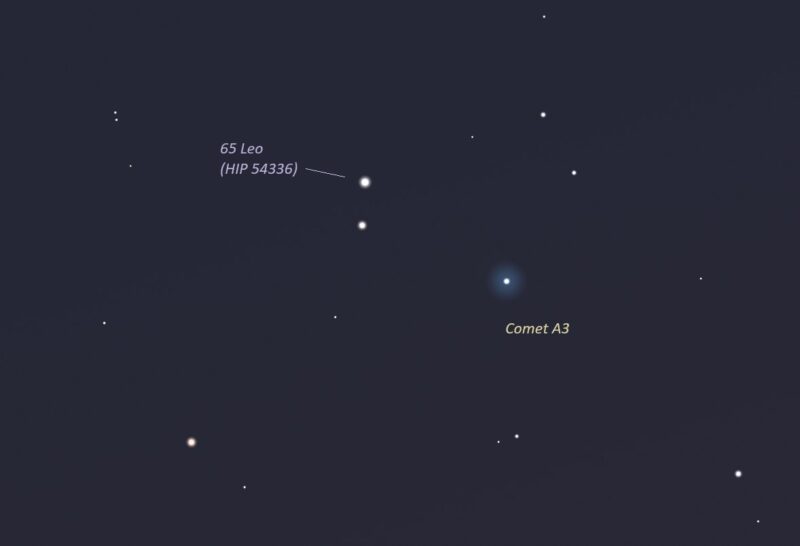
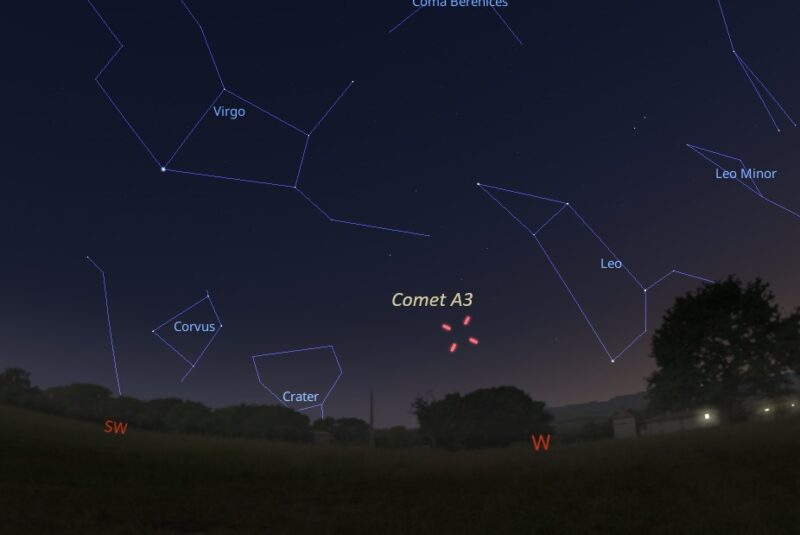
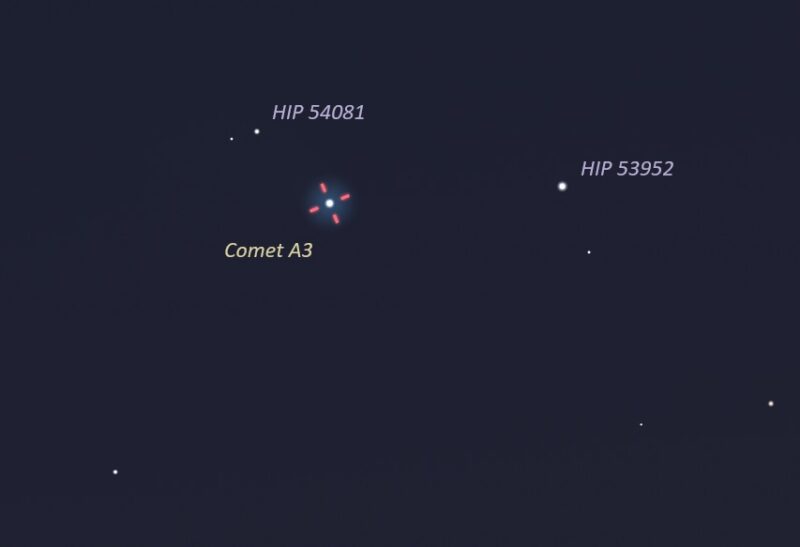
What should we expect?
Comet Tsuchinshan-ATLAS is blazingly speedy. It’s tearing through the inner solar system at 180,610 miles (290,664 km) per hour or 80.74 km per second, relative to Earth. And you can see its amazing speed with a small telescope. You can watch the comet’s location gradually change by comparing its exact position against background stars just 15 minutes later.
As it approaches the interior of the solar system, the celestial visitor from the Oort Cloud should cross the orbit of planet Mars around July 16, 2024. The comet will make its closest approach to the sun (its perihelion) on September 27, 2024.
According to the new study by Sekanina, the comet might disintegrate before reaching perihelion. These predictions are based on the comet’s current performance. But, will it occur?
If it stays intact …
If the comet doesn’t disintegrate, current estimates indicate that around September 27, 2024, it would have a brightness or magnitude between three and four. However, it’ll be very low in the eastern horizon during its closest approach to the sun. Scientists can continue to monitor the comet using instruments like the Solar and Heliospheric Observatory (SOHO), a spacecraft operated by the European Space Agency and NASA.
If still intact after closest approach to the sun, the good news is the high speed of the comet bring it higher in the sky during the following nights after passing by our planet. Thus it will be easier to spot in the western sky.
Its closest approach to Earth comes on October 12, 2024. That is, if it survives. If still intact, current predictions indicate it should have a magnitude between two and three when closest to our planet. That would make it visible to the unaided eye, although not as bright as previously expected.
Recent images obtained by advanced astrophotographers show a faint but very long secondary tail, an ion tail as long as three lunar diameters!
Comet C/2023 A3 (Tsuchinshan-ATLAS) has now a faint 1.5° plasma tail in addition to the dust tail seen for a while: an image taken by Gerald Rhemann yesterday remotely at the Farm Tivoli in Namibia with an ASA Astrograph 12" f 3.6 and a ZWO ASI 6200 MM Pro, LRGB 24/15/15/15 min. pic.twitter.com/SR3bzbWOFa
— Daniel Fischer @cosmos4u@scicomm.xyz (@cosmos4u) July 7, 2024
And if it disintegrates …
However, the appearance of the comet might change soon, if the disintegration process is correct. Sekanina said in his study:
I have assembled extensive circumstantial evidence to support a notion that the comet’s nucleus is currently, and has already been for some time, in the process of progressive fragmentation, which will continue until the point of complete deactivation and disintegration. Given the perihelion distance of 0.39 AU, I expect that the object will disappear and cease to exist as an active comet before perihelion.
The comet has failed to brighten as it approaches the sun. Plus the shape of the dust trail is not looking good for some experts. Sekanina added:
Comet Tsuchinshan-ATLAS exhibits traits that are diagnostic of extensive fragmentation of the nucleus, even though no distinct companion has been observed as of early July.
Discovery and naming
The Asteroid Terrestrial-impact Last Alert System (ATLAS) telescope in South Africa discovered Comet C/2023 A3 on February 22, 2023. Additionally, observers at Purple Mountain (Zijin Shin or Tsuchinshan) Observatory in China found the comet independently on images from January 9, 2023. Therefore, the comet also has the nickname Tsuchinshan-ATLAS.
At discovery, the comet was still 7.3 astronomical units (AU) from the sun, and shining at a dim magnitude 18.
Preliminary analysis of its trajectory suggests comet “A3” completes an orbit around the sun every 80,660 years.
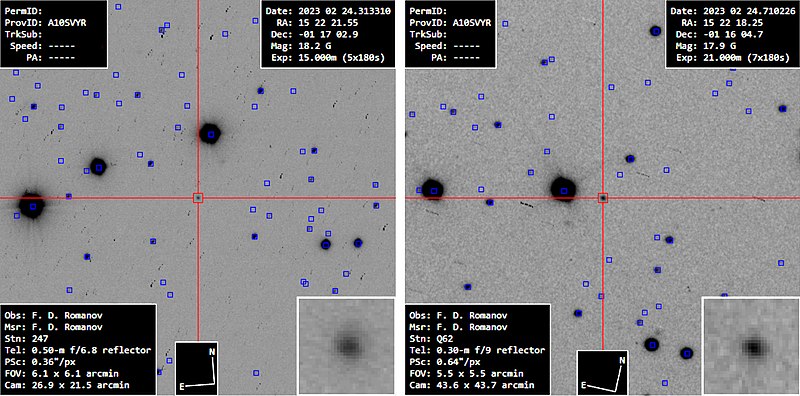
The path of Comet C/2023 A3
After the comet gets closest to the sun, it will swing around near Earth. But as it does so, it passes almost directly between Earth and the sun, making it challenging to view. In early October, the comet will be in the dawn sky in Leo and near the constellations Hydra and Crater.
Then in late October, as it appears on the other side of the sun, it will move into the evening sky, passing through Serpens Caput and into Ophiuchus.
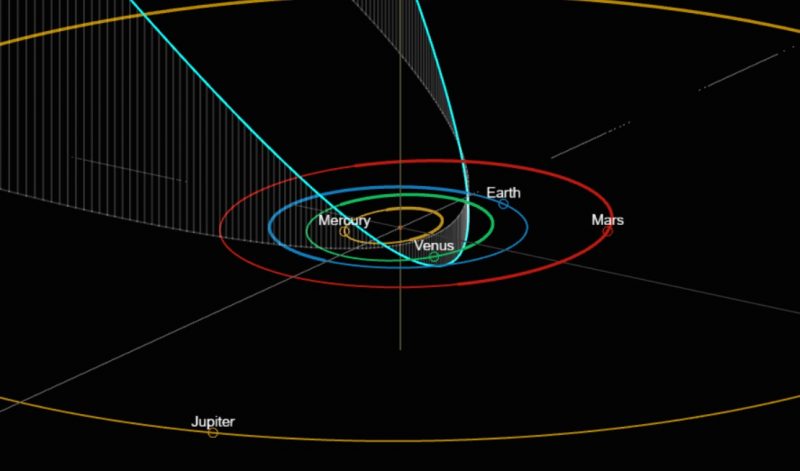
Finder charts for Comet Tsuchinshan-ATLAS
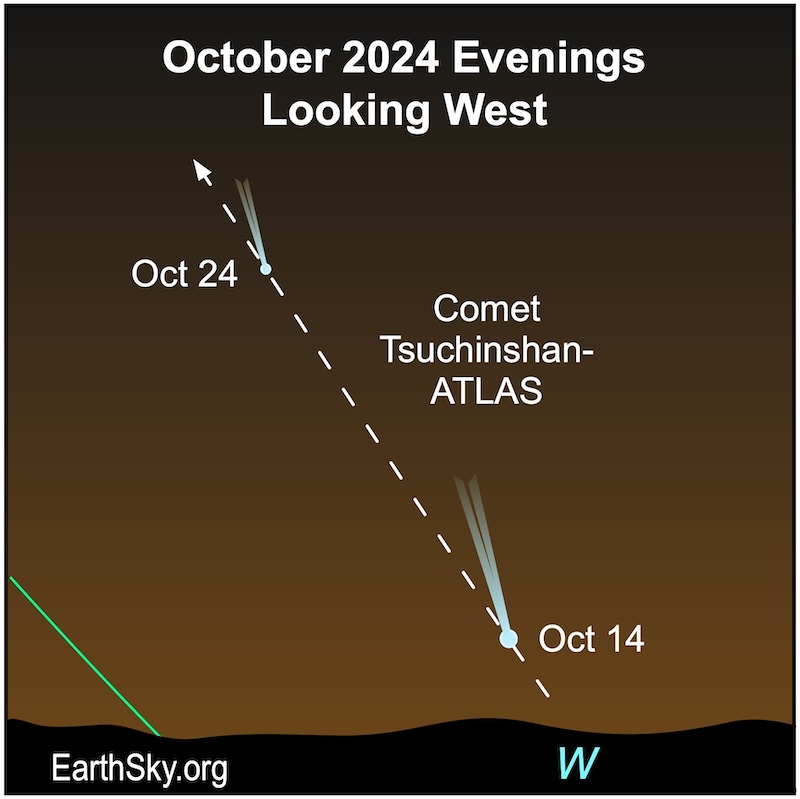
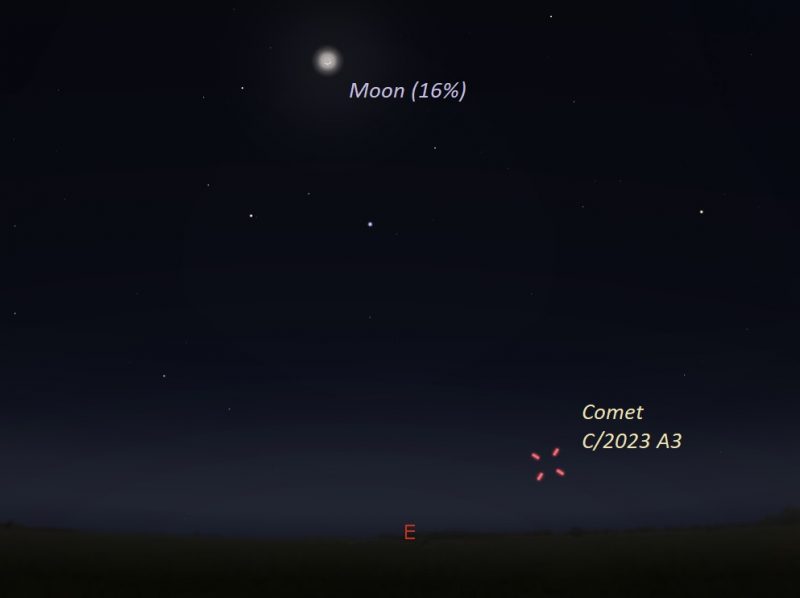
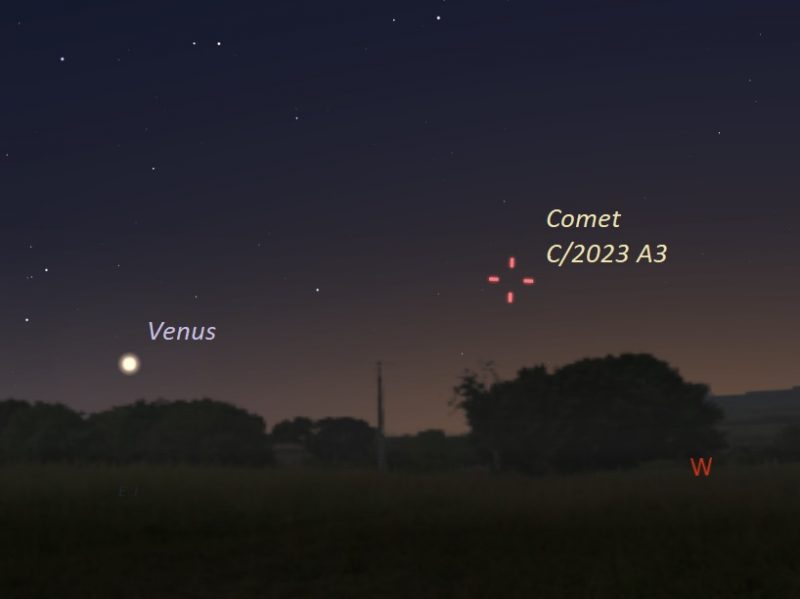
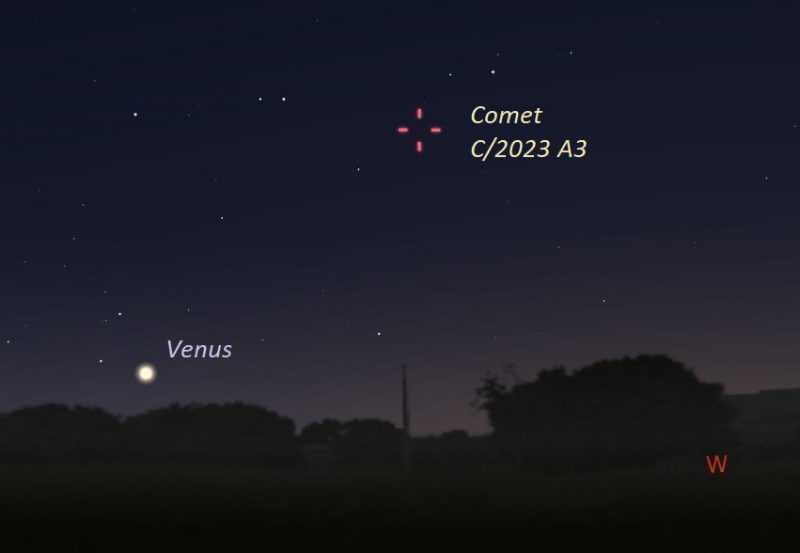
Bottom line: Comet Tsuchinshan-ATLAS, which had a chance to be a bright comet in September and October, may be disintegrating.
Source: Inevitable Endgame of Comet Tsuchinshan-ATLAS (C/2023 A3)











